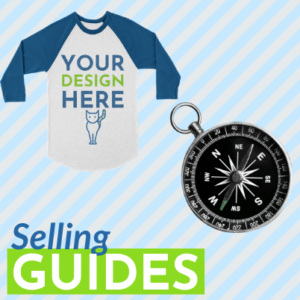Setting Up an Online Store
You’re a go-getter online entrepreneur ready to set your niche on fire. With the dream firmly in place, you’re ready to launch. But where do you even start setting up an online store? The good news is there are shortcuts & done-for-you solutions to make the process easy & efficient. Ecommerce tools range from online payment processors, data analysis, apps for cross-selling, customer service, and dropshipping to produce & fulfill your orders.
As a first-time ecommerce superstar, break down each step from the ground up. Here’s where to start.
Decide What To Sell
Do a deep dive into your local market & find a niche where the demand is already high. For example, maybe you have a digital product like art, video tutorials, comics, e-books, & Etsy printables that you would like to sell. You have many options at your disposal, starting with platforms like Etsy. Or you can sell through your own social media channels with the help of Gumroad.
But what about physical products? Producing, fulfilling, and shipping your orders is time-consuming & distracts even the most seasoned entrepreneurs. Or you can eliminate the busy work & focus on growing your business with the help of dropshipping & print-on-demand services.
CustomCat empowers your business with hundreds of white-label products. Just upload your own designs & connect your store to your account. We make it easy to integrate in just seconds. Then, we’ll do the rest & fulfill your product & ship straight to your customers with your own branding. Think of us as a behind-the-scenes solution. The best part is you don’t spend money on our services until you make money.

Create Your Online Store
After determining what you’re selling & how, the next step is choosing an ecommerce platform. An ecommerce platform is specifically designed to sell products online. It will serve as the foundation of your entire business. Research four or five platforms & list out the pros & cons of each. Your list will help make an informed solution about your business.
Some of the most used platforms are:
- Shopify
- WooCommerce
- Magento
- PrestaShop
- Etsy
- eBay
Most selling platforms will also allow you to integrate a custom store URL. For example, if you sell bounce houses, you can look for variations on a URL like “Bounce Houses Direct” using GoDaddy tools.
Each selling platform offers step-by-step tutorials to set up your online store. Most are incredibly intuitive & help you get up & running in minutes with pre-made templates & tools. From there, you can decide how robust you want to get with your design, apps, & plugins to supercharge your store.
Get Ready To Process Ecommerce Orders
Now you know what you’re going to sell & finished setting up your store, you need a plan for payment. Get ready to rake in your profits by choosing the right payment processor for you.
Integrate a Payment Processor
A payment processor like PayPal or Stripe empowers your business to accept payments for your products. A reputable processor is also safe to use for both your customer & your ecommerce store. You also don’t need any tech knowledge to get started. Just about all of these payment processors integrate with various online platforms. Double-check that your customers can quickly pay for their purchases with their favorite method, from credit card to Venmo.
Most payment processors charge a small percentage of the sale. Ecommerce platforms from Shopify to Etsy also offer their own payment system to make the process easier. But you’ll still need to plan to pay a small percentage on every item you sell.

Choose a Shipping Platform
Shipping is often a stressor for ecommerce entrepreneurs. Getting set up with UPS, FedEx, & DHL is a start. Ask about services that allow you to instantly print shipping labels & ship them straight from your doorstep. Or use a print-on-demand fulfillment service like CustomCat to produce & ship out all of your items for you.
Choose a Marketing Strategy
In an ideal world, you have an unlimited marketing budget to get your products seen everywhere. In reality, you should pick one at the launch of your online store to start spreading the word. Free strategies include social media & blogging, but you need a strategy.
When it comes to blogging at your ecommerce store, make sure it’s valuable. Content marketing doesn’t explicitly promote your brand, but increases the value your customers are getting & gives them a reason to come back for more. Video tutorials, blog posts highlighting customer success stories, gift guides, & pro tips are all ways to offer valuable, free content that grabs your customers’ attention.
Put Customers First
When was the last time you went to the store & had to wait around to get a simple answer? The same thing happens online, but people can click over to another ecommerce store instead. Check to see if your online selling platform offers customer service tools. For example, Shopify provides apps that help you stay connected with customers & quickly answer questions or create FAQ pages. Offer your customers the opportunity to find the answers themselves quickly. Or create video tutorials to help them walk through how to use your products.
A live online chat feature is often preferred by customers & can help propel your business forward. Research shows 42% of customers prefer live chat compared to just 23% for email & 16% for social media or forums.
You don’t have to offer dozens of ways for customers to reach you, but it should be easy and efficient. Beyond dealing with issues, keep offering promos & check-ins with your favorite customers to keep them engaged & feeling like a VIP.

Final Thoughts
Attention to detail is a revered characteristic for most entrepreneurs & go-getters. But don’t make the details overwhelm you with decision fatigue or analysis paralysis. Being bold in your business & taking action is key to success. Launch your store, stay persistent, & keep testing your results. The more momentum you put behind your business, the faster the journey to success will be.
What about you? What was the most essential part of setting up your online store?


